Broadband Dual-Phase Plasmons through Metallization of Polymeric Heterojunctions
Abstract
:1. Introduction
2. Preparation and Stabilization of the Template by Selective Cross-Linking of a Polymeric Phase-Separation Scheme
3. Metallization for Achieving Dual-Phase Plasmons
3.1. Direct Annealing of the Spin-Coated Colloidal Gold Nanoparticles on the Phase-Separation Scheme (Sample A)
3.2. Annealing after Surface Modification Using Oxygen-Plasma Etching (Sample B)
3.3. Removal of the Polymeric Template through Further Annealing at 500 °C (Sample C)
3.4. Tuning the Microscopic Performance by Changing the Preparation Conditions
3.5. The Role of Wetting Performance in the Responsible Mechanisms
4. Optical Spectroscopic Performance
5. Dark-Field Characterization
6. Conclusions
Acknowledgments
Author Contributions
Conflicts of Interest
References
- Yu, Y.Y.; Chang, S.S.; Lee, C.L.; Wang, C.R.C. Gold nanorods: Electrochemical synthesis and optical properties. J. Phys. Chem. B 1997, 101, 6661–6664. [Google Scholar] [CrossRef]
- Munoz-Noval, A.; Fukami, K.; Martin-Palma, R.J.; Sakka, T.; Manso-Silvan, M.; Ogata, Y.H. Surface plasmon resonance study of Au nanorod structures templated in mesoporous silicon. Plasmonics 2013, 8, 35–40. [Google Scholar] [CrossRef]
- Deng, B.C.; Guo, Q.S.; Li, C.; Wang, H.Z.; Ling, X.; Farmer, D.B.; Han, S.J.; Kong, J.; Xia, F.N. Coupling-enhanced broadband mid-infrared light absorption in graphene plasmonic nanostructures. ACS Nano 2016, 10, 11172–11178. [Google Scholar] [CrossRef] [PubMed]
- Ueno, K.; Sun, Q.; Mino, M.; Itoh, T.; Oshikiri, T.; Misawa, H. Surface plasmon optical antennae in the infrared region with high resonant efficiency and frequency selectivity. Opt. Express 2016, 24, 17728–17737. [Google Scholar] [CrossRef] [PubMed]
- Zayatsa, A.V.; Smolyaninovb, I.I.; Maradudinc, A.A. Nano-optics of surface plasmon polaritons. Phys. Rep. 2005, 408, 131–314. [Google Scholar] [CrossRef]
- Alegret, J.; Rindzevicius, T.; Pakizeh, T.; Alaverdyan, Y.; Gunnarsson, L.; Kall, M. Plasmonic properties of silver trimers with trigonal symmetry fabricated by electron-beam lithography. J. Phys. Chem. C 2008, 112, 14313–14317. [Google Scholar] [CrossRef]
- Lin, V.K.; Teo, S.L.; Marty, R.; Arbouet, A.; Girard, C.; Alarcon-Llado, E.; Liu, S.H.; Han, M.Y.; Tripathy, S.; Mlayah, A. Dual wavelength sensing based on interacting gold nanodisk trimers. Nanotechnology 2010, 21, 305501. [Google Scholar] [CrossRef] [PubMed]
- Liu, Y.J.; Leong, E.S.P.; Wang, B.; Teng, J.H. Optical transmission enhancement and tuning by overylaying liquid crystals on a gold film with patterned nanoholes. Plasmonics 2011, 6, 659–664. [Google Scholar] [CrossRef]
- Wang, L.; Nishijima, Y.; Ueno, K.; Misawa, H.; Tamai, N. Plasmon coupling and coherent acoustic phonon dynamics of periodic gold pair nanocuboids by near-IR transient absorption spectroscopy. J. Photochchem. Photobiol. A 2011, 221, 164–168. [Google Scholar] [CrossRef]
- Zhang, X.P.; Sun, B.Q.; Friend, R.H.; Guo, H.C.; Nau, D.; Giessen, H. Metallic photonic crystals based on solution-processible gold nanoparticles. Nano Lett. 2006, 6, 651–655. [Google Scholar] [CrossRef] [PubMed]
- Zhang, X.P.; Sun, B.Q.; Guo, H.C.; Tetreault, N.; Giessen, H.; Friend, R.H. Large-area two-dimensional photonic crystals of metallic nanocylinders based on colloidal gold nanoparticles. Appl. Phys. Lett. 2007, 90, 133114. [Google Scholar] [CrossRef]
- Liu, H.M.; Zhang, X.P.; Zhai, T.R. Plasmonic nano-ring arrays through patterning gold nanoparticles into interferograms. Opt. Express 2013, 21, 15314–15322. [Google Scholar] [CrossRef] [PubMed]
- Berta, M.; Biver, E.; Maria, S.; Phan, T.N.T.; D’Aleo, A.; Delaporte, P.; Fages, F.; Gigmes, D. Nanosecond laser-induced periodic surface structuring of cross-linked azo-polymer films. Appl. Surf. Sci. 2013, 282, 880–886. [Google Scholar] [CrossRef]
- Zhang, X.P.; Li, H.W. Laser-induced selective crosslinking for scaling the heterointerfacial domain in polymer blends. Opt. Express 2013, 21, 24620–24629. [Google Scholar] [CrossRef] [PubMed]
- Zhang, X.P.; Liu, F.F.; Li, H.W. Selective photophysical modification on light-emitting polymer films for micro- and nano-patterning. Materials 2016, 9, 121. [Google Scholar] [CrossRef] [PubMed]
- Morteani, A.C.; Sreearunothai, P.; Herz, L.M.; Friend, R.H.; Silva, C. Exciton regeneration at polymeric semiconductor heterojunctions. Phys. Rev. Lett. 2004, 92, 247402. [Google Scholar] [CrossRef] [PubMed]
- Charas, A.; Alves, H.; Alcacer, L.; Morgado, J. Use of cross-linkable polyfluorene in the fabrication of multilayer polyfluorene-based light-emitting diodes with improved efficiency. Appl. Phys. Lett. 2006, 89, 143519. [Google Scholar] [CrossRef]
- Abdulla, M.; Renero-Lecuna, C.; Kim, J.S.; Friend, R.H. Morphological study of F8BT:PFB thin film blends. Org. Electron. 2015, 23, 87–98. [Google Scholar] [CrossRef]
- Inaoka, S.; Roitman, D.B.; Advincula, R.C. Cross-linked polyfluorene polymer precursors: Electrodeposition, PLED device characterization, and two-site co-deposition with poly(vinylcarbazole). Chem. Mater. 2005, 17, 6781–6789. [Google Scholar] [CrossRef]
- Zhang, X.P.; Liu, H.M.; Li, H.W.; Zhai, T.R. Direct nanopatterning into conjugated polymers using interference crosslinking. Macromol. Chem. Phys. 2012, 213, 1285–1290. [Google Scholar] [CrossRef]
- Zhang, X.P.; Liu, H.M.; Feng, S.F. Solution-processible fabrication of large-area patterned and unpatterned gold nanostructures. Nanotechnology 2009, 20, 425303. [Google Scholar] [CrossRef] [PubMed]
- Alexander, B.T.; Chuntonov, L.; Karakouz, T.; Bendikov, T.A.; Haran, G.; Vaskevich, A.; Rubinstein, I. Tunable localized plasmon transducers prepared by thermal dewetting of percolated evaporated gold films. J. Phys. Chem. C 2011, 115, 24642–24652. [Google Scholar]
- Sun, H.; Yu, M.; Wang, G.; Sun, X.; Lian, J. Temperature-dependent morphology evolution and surface plasmon absorption of ultrathin gold island films. J. Phys. Chem. C 2012, 116, 9000–9008. [Google Scholar] [CrossRef]
- Zhang, X.P.; Li, H.W.; Wang, Y.M.; Liu, F.F. Stimulated emission within the exciplex band by plasmonic-nanostructured polymeric heterojunctions. Nanoscale 2015, 7, 5624–5632. [Google Scholar] [CrossRef] [PubMed]
- Kooij, E.S.; Ahmed, W.; Zandvliet, H.J.W.; Poelsema, B. Localized plasmons in noble metal nanospheroids. J. Phys. Chem. C 2011, 115, 10321–10332. [Google Scholar] [CrossRef]
- Zhang, S.; Li, G.C.; Chen, Y.Q.; Zhu, X.P.; Liu, S.D.; Lei, D.Y.; Duan, H.G. Pronounced fano resonance in single gold split nanodisks with 15 nm split gaps for intensive second harmonic generation. ACS Nano 2016, 10, 11105–11114. [Google Scholar] [CrossRef] [PubMed]
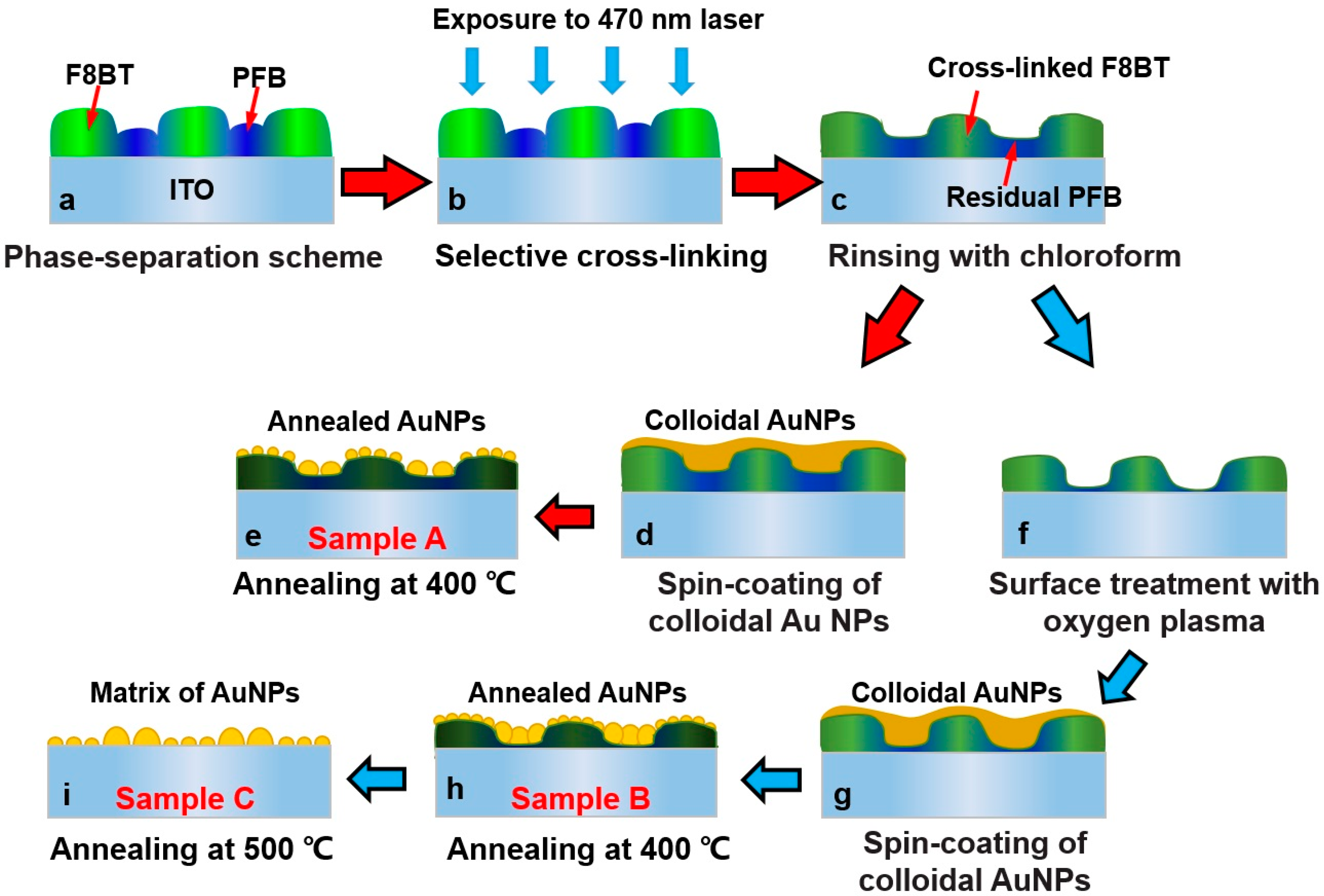
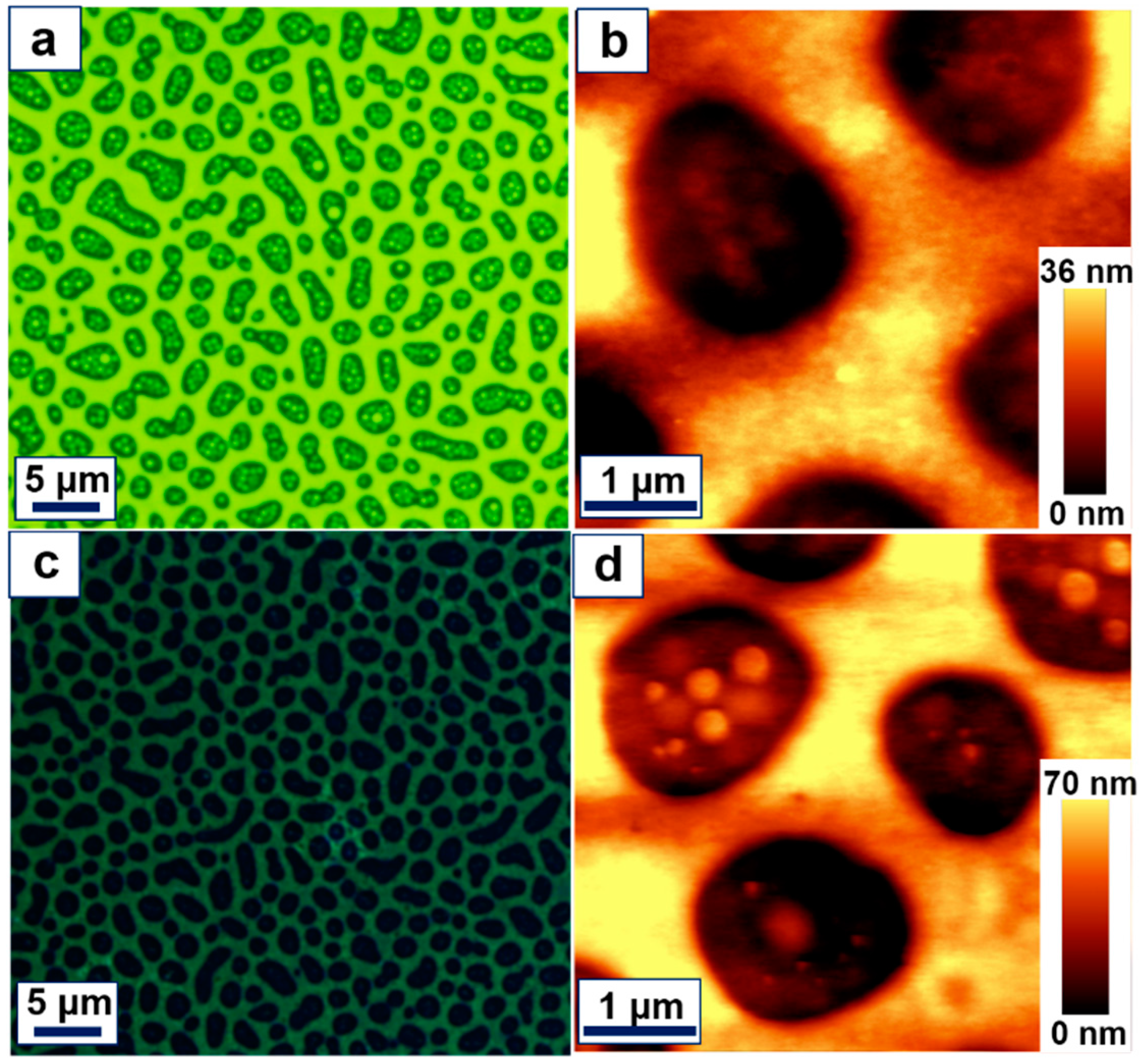
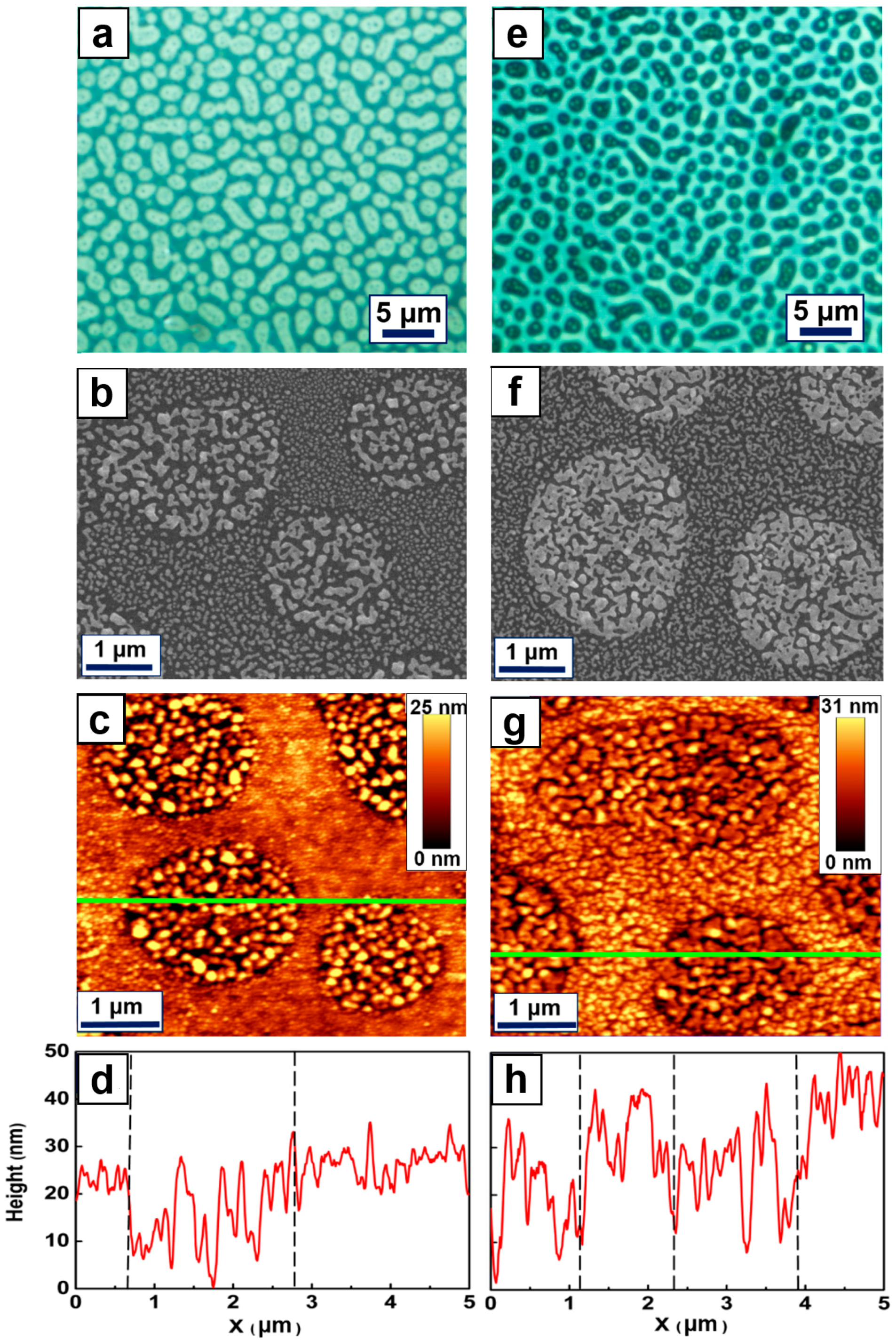
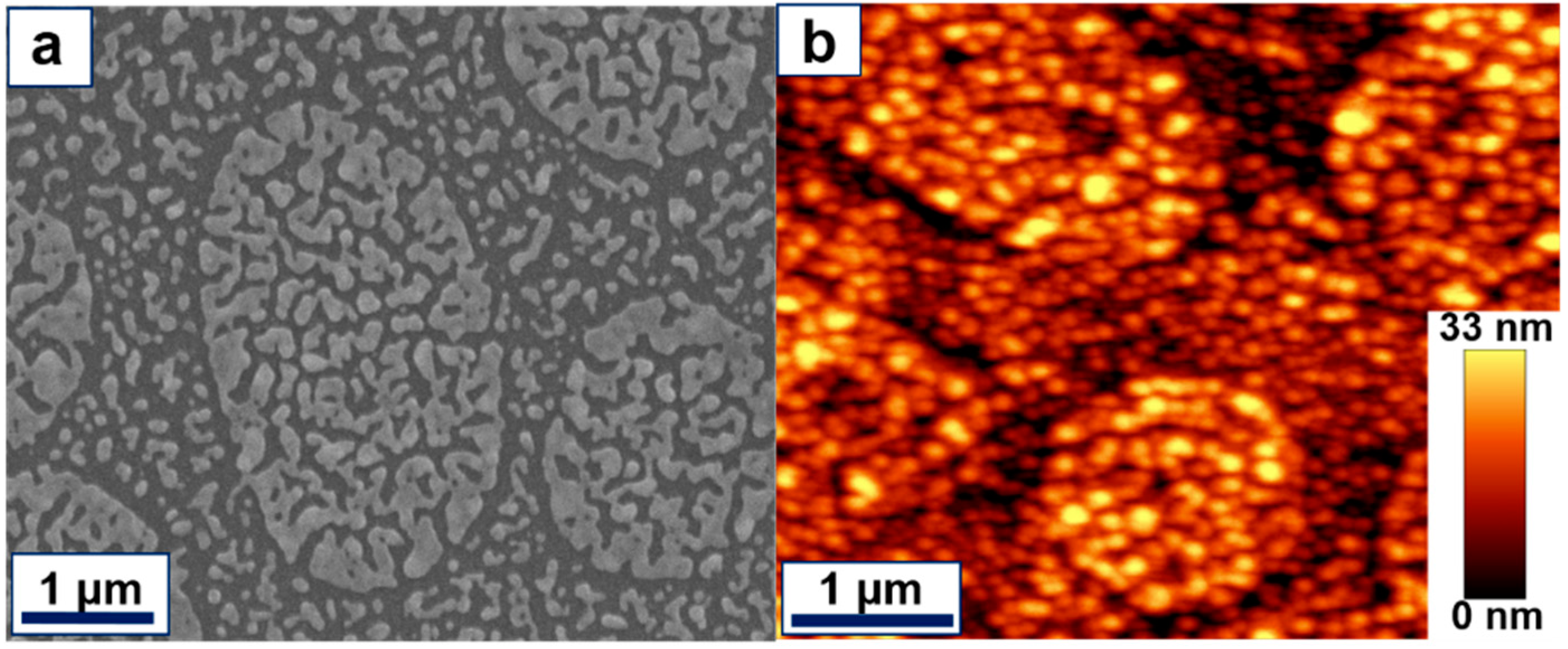
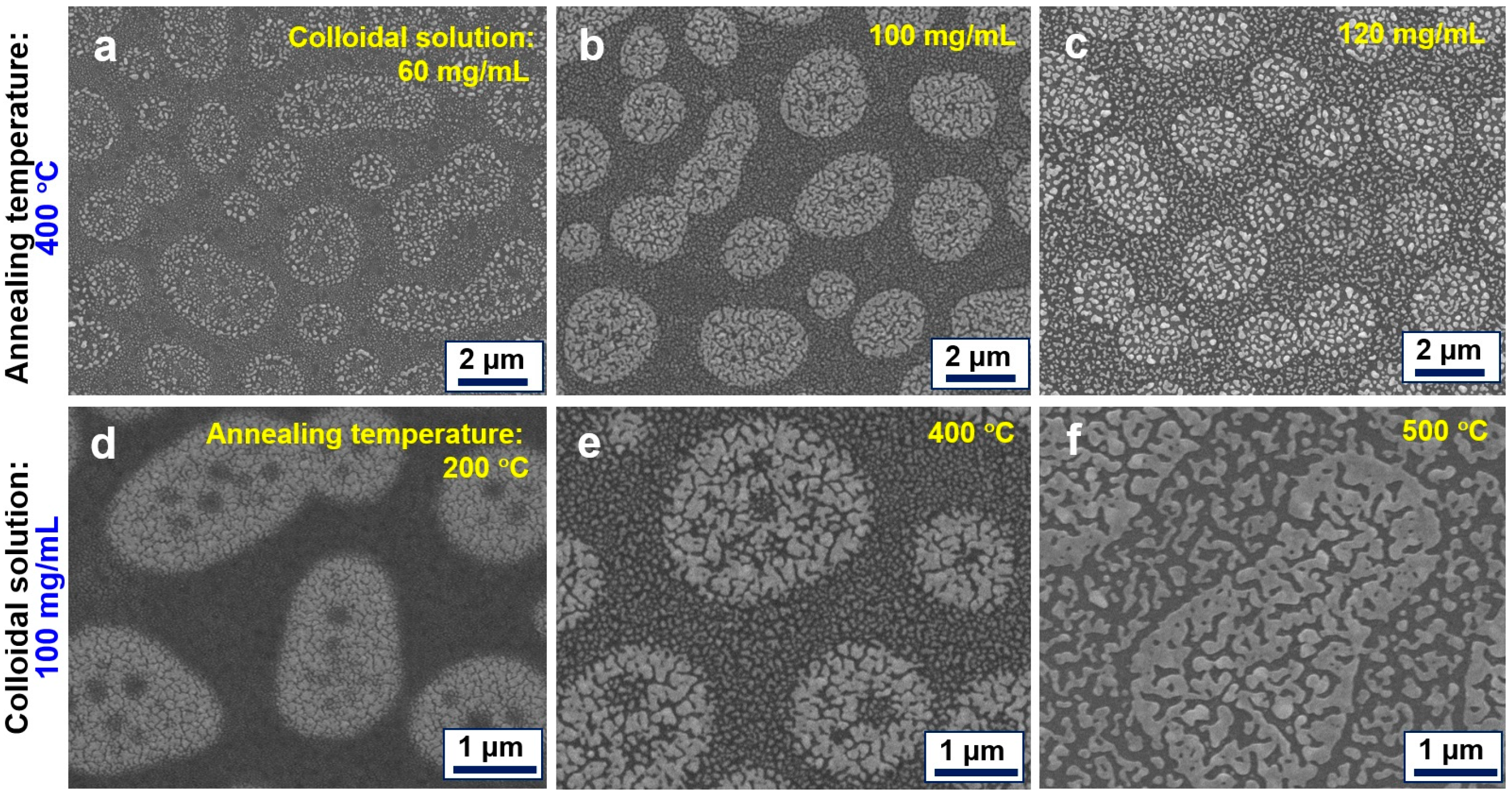
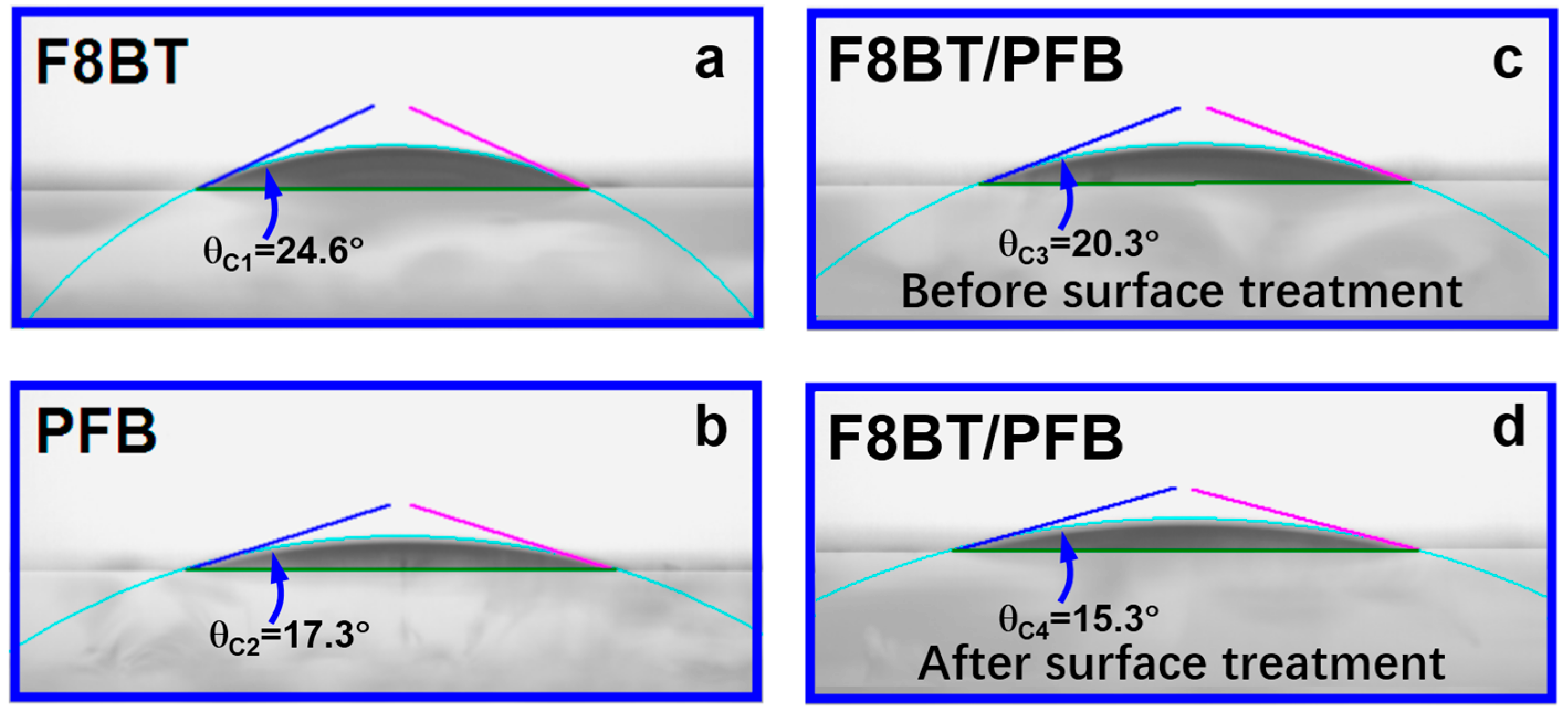
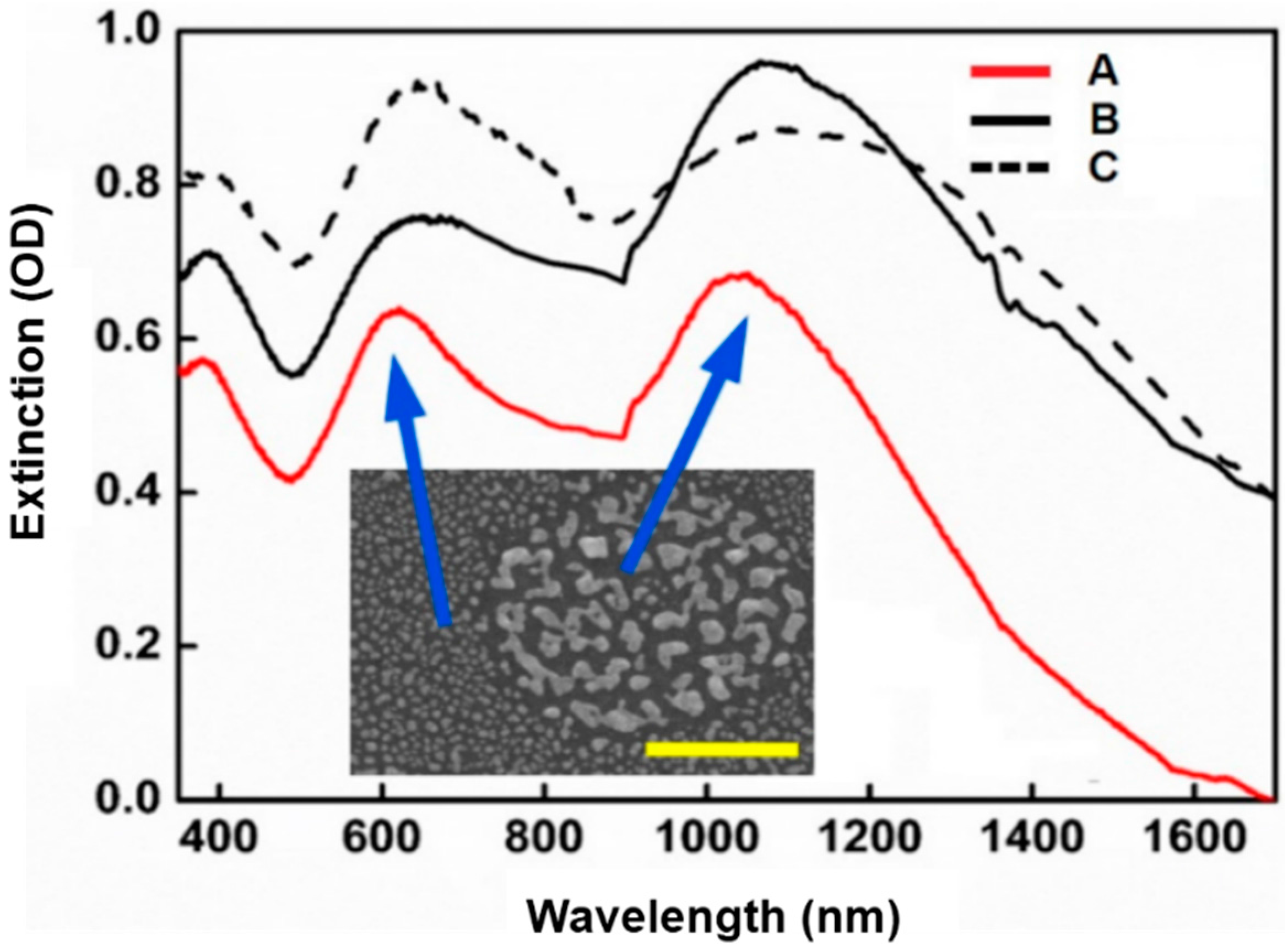
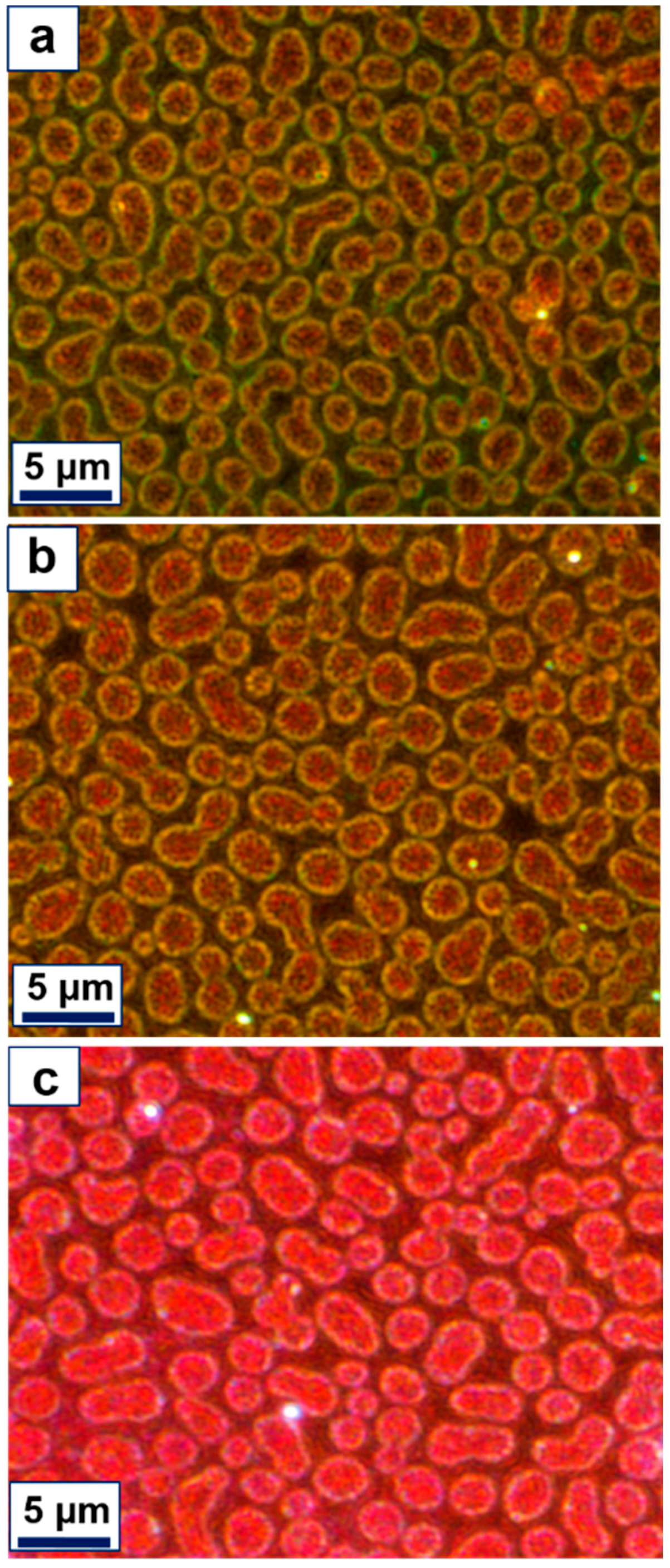
© 2017 by the authors. Licensee MDPI, Basel, Switzerland. This article is an open access article distributed under the terms and conditions of the Creative Commons Attribution (CC BY) license (http://creativecommons.org/licenses/by/4.0/).
Share and Cite
Huang, C.; Zhang, X. Broadband Dual-Phase Plasmons through Metallization of Polymeric Heterojunctions. Metals 2017, 7, 314. https://doi.org/10.3390/met7080314
Huang C, Zhang X. Broadband Dual-Phase Plasmons through Metallization of Polymeric Heterojunctions. Metals. 2017; 7(8):314. https://doi.org/10.3390/met7080314
Chicago/Turabian StyleHuang, Cuiying, and Xinping Zhang. 2017. "Broadband Dual-Phase Plasmons through Metallization of Polymeric Heterojunctions" Metals 7, no. 8: 314. https://doi.org/10.3390/met7080314




